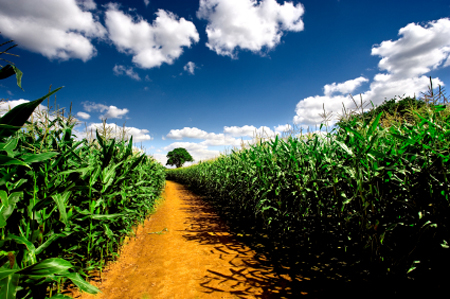Corn, Beans Lower As Crop Tour Chugs On; Favorable Crop Weather Forecast for September
 (Agriculture.com) – CORN, BEANS LOWER AS CROP TOUR MOVES INTO `I’ STATES
(Agriculture.com) – CORN, BEANS LOWER AS CROP TOUR MOVES INTO `I’ STATES
Corn and soybeans dropped amid strong yield potential in Indiana as the Pro Farmer Crop Tour moves toward Iowa and Illinois.
The tour pegged Indiana yield at 173.4 bushels an acre, up from the 150 bushels an acre actually collected last year. Soybean pods per 9-square feet were projected at 1,178.4, up from 1,093.1 estimated last year.
In Nebraska, corn yield was forecast at 158.6 bushels an acre, well below the 185 bushels an acre realized in 2015. Soybean pods in a 3-by-3 square totaled 1,223.1, almost on par with the estimate for 1,220 last year.
So far Indiana has been the only state toured that beat last year’s yields, with crops in Nebraska, Ohio and South Dakota all disappointing. Still, the tour has yet to make its way into Iowa and Illinois, the biggest growers of both corn and beans in the U.S., where crops are expected to be extremely large thanks to ample rain throughout the growing season.
Corn futures for December delivery lost 2 ½ cents to $3.34 ¾ a bushel on the Chicago Board of Trade.
Soybeans for November delivery declined 8 cents to $10.05 ½ a bushel, soymeal futures for December delivery fell $2.40 to $326.10 a short ton, and soy oil lost 0.01 cent to 34.31 cents a pound.
Wheat futures for December delivery fell 3 ¼ cents to $4.24 ¼ a bushel overnight in Chicago, while Kansas City futures dropped 4 ¼ cents to $4.29 ¼ a bushel.
ADEQUATE MOISTURE, WARM WEATHER IN SEPTEMBER TO BENEFIT U.S. CROPS
U.S. winter wheat will go into the ground with “mainly adequate moisture” while wet weather will likely slow early corn and soybean harvest in smaller growing regions, Commodity Weather Group said in its Ag Seasonal Outlook report.
Showers in the Delta and Ohio River Valley will probably keep farmers from collecting their crops during parts of September, the forecaster said. A drier October, however, will help minimize losses. The wet weather, particularly in the Delta, is threatening the quality of cotton and rice, and to a lesser degree, soybeans, CWG said.
In the Midwest, temperatures likely will be warmer than usual for much of September, the forecaster said in its report.
“Near- to above-normal temperature pattern in September to benefit corn and soy maturity pace in Midwest and keep frost threats limited,” CWG said.
Winter wheat seedlings will have adequate moisture to get started this year, but some dryness in the southeastern Wheat Belt – where soft-red winter varieties are planted – “need to be watched” for dry spots that could develop late in the planting season, the Washington DC-based forecaster said.
STRONG STORMS EXPECTED IN MUCH OF IOWA, NORTHERN MISSOURI
Strong storms are rolling through much of Iowa, Missouri and into Illinois today that could cause flash flooding, the National Weather Service said in a report on Wednesday morning.
“Numerous showers and thunderstorms are expected this afternoon and evening across the central Plains into portions of the Midwest,” the NWS said. “Severe thunderstorms are possible, along with heavy rain that may lead to flash flooding in some areas.”
Several counties stretching from Mason City, Iowa, almost to Madison, Wisconsin, are under flash flood warnings or watches, according to the NWS. Further south, a large system stretching from northeastern Kansas into western Illinois that encompasses most of southern Iowa and northern Illinois is bringing severe weather to the area.
“A frontal boundary will settle across northern Missouri through the afternoon,” the NWS said. “This will lead to several rounds of strong thunderstorms across portions of northern Missouri, especially in areas north of the Missouri River.”
The storms are expected to be “efficient rain-makers” that could cause flooding.




